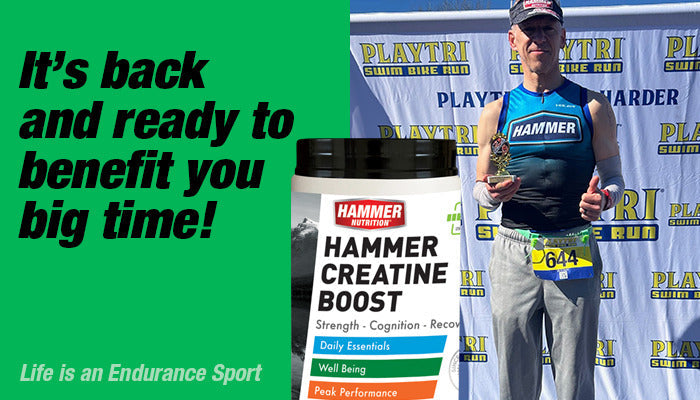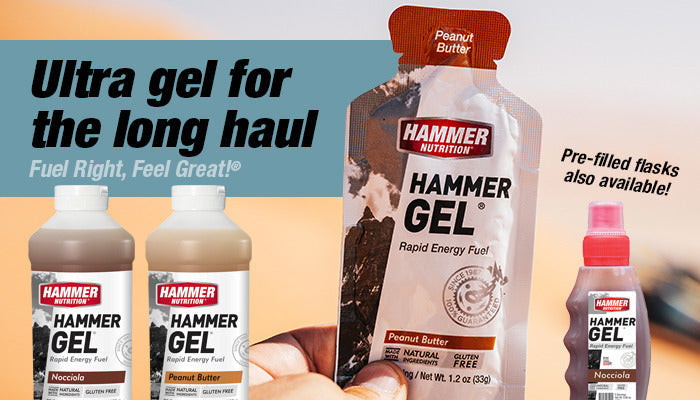
How does your sugar intake stack up?
By Vicki Hackman
Hammer Peak Performance Tip: Many supposedly healthy foods contain surprisingly unhealthy amounts of sugar. Lower your intake by reading labels; choose fresh, whole foods; and fuel with complex carbohydrates instead of simple sugars. Hammer Gel, HEED, and Recoverite contain 0 grams of added simple sugars. Read on for details
You don't put granulated sugar in your coffee (knowingly) and - aside from the occasional brownie - you gave up desserts eons ago. But chances are good that you consume far more of the sweet stuff than you know. According to the United States Department of Agriculture (USDA), Americans consume more than 150 pounds of sugar per year, on average.
Cane and beet sugars ("table sugar," aka sucrose) account for just 43% of that amount, according to the USDA. Virtually all of the remainder comes from high fructose corn syrup (42%), glucose, and dextrose (refined, simple sugars) added by the makers of processed foods. Check out these hidden sources of added and natural sugars, and tally your personal intake:
1. Flavored yogurts (24-30 grams*/cup), especially those seemingly healthy fat-free or "lite" yogurts, typically are loaded with sugary flavorings. Opt for plain yogurt - preferably homemade, instead.
2. Fruit juices (21-24 grams/cup), including 100% fruit juices, contain nearly as much sugar as soda does per cup. Fruit drinks (including trendy energy drinks and teas) can be worse, with 30 grams or more per cup. Instead, have whole fruit, which offers fiber, vitamins, and minerals with less sugar. A medium navel orange has about 12 grams of natural sugars.
3. Granola (19-24 grams/cup), despites its healthy reputation, often comes with added sugar in the form of honey or maple syrup, as well as sugary dried fruit and sweetened coconut. Check granola labels before you buy. Or make your own using nuts and seeds instead of fruit.
4. Salad dressings, sauces, condiments (6-8 grams/2 Tbsp.), typically include sugar as do many balsamic vinegars. Choose dressings with less than 2 grams of sugar per serving. Or make your own simple vinaigrette. Instead of using barbecue sauce, ketchup, canned tomato sauce, or teriyaki sauce, flavor up foods with tahini (sesame seed paste), horseradish, mustard, kimchi, or avocado.
5. Flavored coffees (24+ grams/cup) usually contain sugary syrups (and often artificial flavors). Size up and the sugar soars: A Starbucks Cinnamon Dolce Latte Grande (16 oz.) has 40 grams of sugar; a Pumpkin Spice Latte Grande gives you 48 grams. Better: enjoy pure, healthful organic coffee - 53x11, of course.
What you can do
To cut your intake of dietary sugars, aim to prepare more homemade meals with whole, unprocessed ingredients. (Download our FREE In the Kitchen with Hammer Nutrition for great recipes!) Before you buy packaged foods, check the label for sugar content. And, choose endurance fuels that contain no added simple sugars. Hammer Nutrition fuels contain only complex carbohydrates guaranteed to deliver sustained energy without the potential adverse health effects of simple sugars.
*For reference, 1 teaspoon equals 4.2 grams.
Good to Know
The consequences of sugar overload include cardiovascular disease, many cancers, diabetes, weight gain, Alzheimer's disease, and tooth decay. Read more about the health problems linked to sugar consumption in the book Suicide by Sugar by Nancy Appleton, Ph.D. and G.N. Jacobs.









